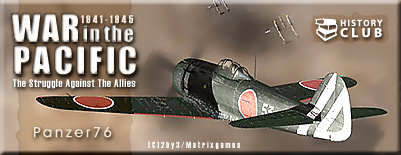Feinder
Posts: 6589
Joined: 9/4/2002
From: Land o' Lakes, FL
Status: offline

|
The Hood's lesser amount of deck armor has been greatly maligned thru history.
A lucky shot, that happend to penetrate the "right" spot.
Some points to ponder...
1. What they mean by "speed is the best protection" -was- a sound philosophy at the time of her construction. The battle of the Faulklands (1914?), was dictated by the superior speed RN BCs, where they soundly clobbered their German opponents. Jutland showed otherwise, but it certainly presented a conundrom to designers of the time.
2. It might very well have been the Prinz Eugen that sank the Hood. With the Hood having only 2 - 3" of deck armor, the 8" shells from Prinz Eugen could very easily have penetrated even 3" of armor.
3. -NO- capital ship (up until Dakotas and Iowas, and the overall "beasts" that were the Yamato and Musashi) has ever been sufficiently protected from "plunging fire". Plunging fire occurs after about 12,000+ yds, and means that the trajectory of the shells are such that they are essentially falling like rain, instead of "direct fire", where the shells impact latterally against the ship. Pluging fire is normally against the deck (top) armor of a vessal, wherease "direct fire" is against the belt (side) armor of the ship. The general rule of thumb (that was used up to, and throughout WW2), was belt armor should equal gun size, and deck armor was about 1/4 - 1/3 of belt armor. So a ship with 15" guns would have 15" of belt armor, and 3 - 5" of deck armor. The reason for the lack of deck armor included :
a. at the time that most BBs were constructed (1910 - 1920), fire control was still quite difficult (no radar). Therefore, an egagement was EXPECTED to be at ranges of <10,000 yds, where the visible fall of shot could be most accurately observed. We point back to belt armor (direct fire) being the main concern at ranges of less than 10,000 yds; because "What's the need for greater deck armor, if nobody is likely to hit anything at ranges where deck armor is the considered factor?"
b. If you don't need much deck armor, because you don't think surface engagemenst will be over 10,000 yds, your only other threat is Gen Billy Mitchell and those new-fangled flying machines. Everybody knows that Mitchell got lucky sinking those two obsolete German BBs, but we'll put enough armor up top to protect vs. most bombs that planes can carrry (about 250 lbers during the 1920s).[/sarcasm off]
c. The real threat was considered to be torpedoes (actually, quite accurate). Most capitol ships were refitted with torpedo bulges, or incorporated them into their design.
d. All this armor means weight. The more amor you have, the more weight you now have to push thru the water. You either need more/stronger engines, but if you do that, you now have to spread your your armor more, to protect those extra engines (cue the Hood). Or you squish everything together (less area to protect), but your limited to fewer, less powerful engines (the Rodney and Nelson were "squished" (very dense armor), but could only make 22 kts at best).
4. With it's 4 inches of deck armor, even the Prince of Wales was vulnerable to plunging fire from Bismark's 15" guns at those ranges. Conversely, Bismark would -ALSO- have been vulnerable to PoW and Hoods plunging fire (if they had hit), even with her 5" of dect armor.
5. Esp with the integration of radar into fire control, surface engages were able to "open" at much longer ranges (about 16,000 yds). This meant that Deck Armor -was- important. And it often only took 2 or 3 hits at such a range to decide the victor in the battle (if you've already lost 2 turrets by the time the range is within 12,000 yds, you're at a distinct disadvantage).
Enjoy.
-F-
< Message edited by Feinder -- 9/7/2004 9:55:48 AM >
_____________________________
"It is obvious that you have greatly over-estimated my regard for your opinion." - Me  |
 Printable Version
Printable Version


























 New Messages
New Messages No New Messages
No New Messages Hot Topic w/ New Messages
Hot Topic w/ New Messages Hot Topic w/o New Messages
Hot Topic w/o New Messages Locked w/ New Messages
Locked w/ New Messages Locked w/o New Messages
Locked w/o New Messages Post New Thread
Post New Thread